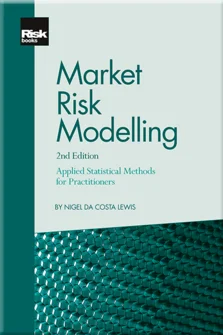Alternative Methods to Measure Correlation
Preface
Risk Modelling and its Myths
Mastering the R Statistical Package
Key Concepts on Probability
Tools for Describing Risk Factors and Portfolios
The Essentials of Hypothesis Testing for Risk Managers
Alternative Methods to Measure Correlation
A Primer On Maximum Likelihood Estimation
Regression in a Nutshell
Fitting Probability Distributions to Data
Practical Principal Components Analysis
Three Essential Models for Volatility
Random Numbers and Applied Simulation
Tail Risk Modelling
Conclusion to 'Market Risk Modelling (2nd edition)'
An important element of applied statistical modelling involves examining the relationship between two or more random variables. Take, for example, an analyst who is interested in knowing the relationship between European stock market indexes. The goal may be to assess the relative risk of each index and build a successful trading strategy. If the analyst simply assumes no relationship exists between the indexes, they may be exposed to the risk that they move together in a predictable fashion. In this chapter, the popular metrics for calculating correlation will be compared, the role of hypothesis testing discussed and details on constructing confidence intervals outlined. The chapter ends with a discussion of correlation metrics when the variables of interest are binary rather than continuous. Code samples in R help clarify many of the concepts.
Correlation coefficients provide a way to characterise the close-ness of the indexes over time. It measures the extent to which two variables are related to each other by assuming a linear relationship, and takes values between –1 and +1. A value of –1 indicates a perfectly negative linear relationship and a correlation of +1 indicates a
Copyright Infopro Digital Limited. All rights reserved.
As outlined in our terms and conditions, https://www.infopro-digital.com/terms-and-conditions/subscriptions/ (point 2.4), printing is limited to a single copy.
If you would like to purchase additional rights please email info@risk.net
Copyright Infopro Digital Limited. All rights reserved.
You may share this content using our article tools. As outlined in our terms and conditions, https://www.infopro-digital.com/terms-and-conditions/subscriptions/ (clause 2.4), an Authorised User may only make one copy of the materials for their own personal use. You must also comply with the restrictions in clause 2.5.
If you would like to purchase additional rights please email info@risk.net











